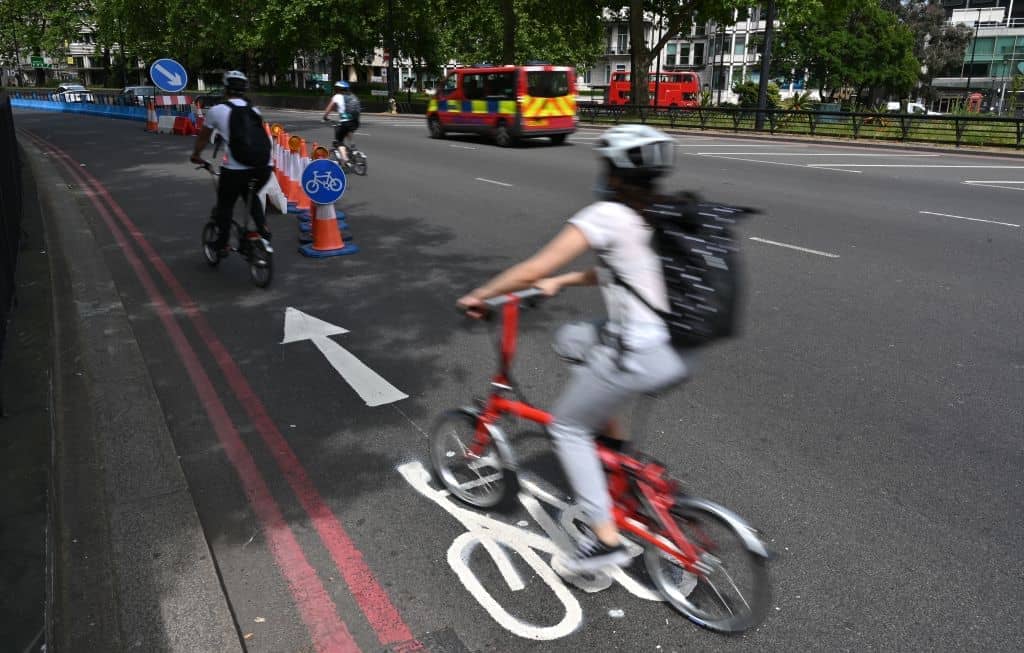London is the most congested city in the world and it’s the cycle lanes wot done it. That is the impression you will pick up from the headlines this morning.
‘Cycle Lanes Blamed as City Named Most Congested,’ reads a BBC headline, to take but one example. The story emerges, it turns out, from a global index published by transport consultancy Inrix, which claims that motorists in London spent an average of 148 hours in traffic jams this year, more than in any other country in the world. In the past year, the city climbed from being the 16th most-congested of those studied to the most congested of that lot.
This report has been enlisted as a weapon in the hundred years’ war between motorists and cyclists
But are the cycle lanes hurriedly put in during the lockdown, to provide for people to get about when they might not want to cram onto trains and buses, really to blame? It is true that Peter Lees, operations director at Inrix, has comments that the installation of cycle lanes has had ‘a negative impact on congestion’. But he also suggested – and this failed to make it into the headlines – that the main reason for London’s rapid rise through the congestion rankings this year was its rapid economic recovery: traffic was simply rebounding from a very low level in 2020, to a greater extent than in other cities.
In fact, the report itself hardly mentions cycle lanes. Further, it reveals that congestion has fallen slightly since 2019, before Covid – and before some emergency cycle lanes and other traffic measures were put in place. In that year, London motorists spent an average of 149 hours in traffic jams.
It is a similar story in other large British cities: Birmingham has seen the number of hours stuck in traffic jams fall by 34 per cent since 2019, Manchester by 33 per cent and Bristol by 36 per cent. Congestion has grown, on the other hand in smaller towns – the sorts of places to which middle class, car-owning families decamped to on the arrival of Covid: in Exeter the number of hours lost to traffic jams is up 27 per cent since 2019, Cheltenham 18 per cent and Cambridge seven per cent.
There are some other questions which might be asked of this report, but which it fails to answer. The headline figures focus exclusively on the number of hours that the average motorist has lost in traffic jams. But how many motorists are trying to get about by car? Is that going up and down? The report doesn’t provide data on that. If jams have increased over the past year because economic activity has increased – as Lees suggested – then that should surely be received as good news.
And what about cyclists and pedestrians: are their journeys getting easier or more difficult? Answer comes there none. If you are going to judge the success, or otherwise, of emergency cycle lanes and other traffic-reducing measures (many of which have, in any case, been reversed) you would need to know the overall effect on transport: if, say, 30 per cent of motorists had switched to cycling to work and were enjoying faster journeys as a result that would put a different complexion on the data relating to the number of hours being lost by motorists in traffic jams.
But no data is offered relating to other road-users’; only motorists. This report has been enlisted as a weapon in the hundred years’ war between motorists and cyclists without it offering any useful data to judge the allocation of road space.







Comments